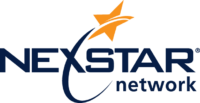We’re going to talk about a painful topic,” Callbacks”. I bet I just made the hair stand up on the back of your neck. After being a contractor for 23-plus years and speaking to contractors daily, one of the most proverbial pain points in owning a contracting business is callbacks. Callbacks can be highly frustrating Read more
Callbacks

We’re going to talk about a painful topic,” Callbacks”. I bet I just made the hair stand up on the back of your neck. After being a contractor for 23-plus years and speaking to contractors daily, one of the most proverbial pain points in owning a contracting business is callbacks. Callbacks can be highly frustrating, a waste of valuable time, increase technician turnover, very expensive for the company, and in some cases, the loss of a customer. Throughout this article, will talk about dissecting the cause, and I will give you four steps you can implement to reduce them.
If we break callbacks into four categories; human error, manufacturer defects, lack of training, and inadequate operations it will be much easier to identify a rationale to track them. We are all human and prone to make some mistakes and even the best manufacturers have some defective products that find their way to the wholesaler’s shelf. Training is one of the best areas to maximize your efforts as it improves technician confidence which customers will immediately notice when speaking to them. A company-wide training culture also creates validation that a tech fully understands the product “before” being asked to service or install products. Operations afford owners and managers to be transparent with their techs when an event occurs and how to prevent them from moving forward. Using technology can help mitigate callbacks by bringing consistent operations to the top of mind, customer communication, and customer specifics, when techs are in the field.

Human Error
Unless the mistake is repetitive, or constantly not following company operations, human error is a hard one to have a resolution for. Good coaching, knowing and interacting with your techs, and being transparent with technicians are some of the best procedures to help with human error. Look at the data and see if there is a pattern. Perhaps something is happening with that senior tech outside of work that is causing the errors at work. Tracking the errors by the technician and job type is a best practice to reduce them.
Manufacture Defects
Contractors attempting to get paid for a manufacturer defect is challenging. We all know most times if a product fails under the warranty period, it will replace the part but not pay for any of the labor. Even on a DOA (dead on arrival) issue, this policy stays true however, there are exceptions. The key takeaway for handling defective products is to track them. Tracking them gives you the availability to see trends and make adjustments to the product or manufacture. It’s also worth noting to differentiate between the product and the tech doing the work. Specifically, make sure it is the product and not an install or service procedure the tech is not doing correctly. Once you track how many manufacturing defects you see in the course of the year, then calculate and it should become a line item in your pricing structure as a cost of doing business. Yes, this is a normal expense item that is a cost to run a business. Large corporations operate this way as they know there will be mistakes and contracting is no different.
Operations
Constantly monitoring and adjusting your operations can play a role in reducing callbacks. There are numerous CRM’s that help automate tracking the data to make adjustments. Data like trends in a job type, what products were used, which tech did the work, and the amount of time the tech was on the call. Automation also helps to mitigate confusion between the customer, dispatcher, and the original call. Defining and adjusting operations that affect callback mitigation is key to reducing them company-wide. Be completely transparent with company procedures between the technicians and their manager as to what happens when there is a callback.
Training
Teachable and trainable moments on an individual and company-wide basis can be produced through callbacks. Decide if there is one tech or several techs on a given call type having callbacks. If it’s several techs on the same callback, bring them together and reinforce the training on the hows and whys and just as importantly track the outputs of the training efforts. Make the adjustments from the group to individualized training accordingly if the callbacks persist with one technician. If the callback is from an individual and it’s identified as a training issue, assign or implement the training and as an interim, use your CRM to prevent that tech from doing the call type until it is confirmed the tech thoroughly understands the original mistakes made. Providing, implementing, and tracking training for your tech is one guaranteed way to mitigate technical and operational mistakes that lead to callbacks. In the fast-paced business environment, numerous contractors don’t value training or implementation of activity at the level it should be. There are other, less expensive options available to contractors to use a training tool instead of traditional brick-and-mortar training models. Digital and virtual reality software is available at one-third the price per technician. This training can be done asynchronously and not affect workflows and scheduling. All of the metrics are available to track the progress of a technician’s performance against the training activity assigned to a technician and help with callback mitigation.
There you have it! Implement and or refine these four tactics in your business and you will start to reduce some of your callbacks. It should be noted that one of the impacts of a callback not mentioned in this writing is the financial impact and opportunity costs of a callback on the company’s bottom line. Look for a breakdown and explanation of that in future articles. Happy Contracting!
 Guest Blogger: Ken Midgett, has been in the plumbing and heating industry for over four decades. He has worked in every facet of the plumbing and heating industry. He has owned two successful PHCC businesses, is a licensed Master Plumber, a two-time national award-winning educator for plumbing and heating CTE classrooms, with a 100 percent placement into the industry for all eligible seniors from his program. Ken was noted throughout the CTE industry for the inclusion of non-traditional workers in his classroom, including young women. He has placed several of those young women in the workforce. Ken is passionate about the skilled trades and he continues to stay active in PHCCNA and PHCCPA. Ken is the current president of his local PHCCLV association. This role has allowed him to continue mentoring and coaching young apprentices in the field. He is currently employed at Interplay Learning as the Plumbing Market Director. You can follow Ken at www.linkedin.com/in/kenmidgett.
Guest Blogger: Ken Midgett, has been in the plumbing and heating industry for over four decades. He has worked in every facet of the plumbing and heating industry. He has owned two successful PHCC businesses, is a licensed Master Plumber, a two-time national award-winning educator for plumbing and heating CTE classrooms, with a 100 percent placement into the industry for all eligible seniors from his program. Ken was noted throughout the CTE industry for the inclusion of non-traditional workers in his classroom, including young women. He has placed several of those young women in the workforce. Ken is passionate about the skilled trades and he continues to stay active in PHCCNA and PHCCPA. Ken is the current president of his local PHCCLV association. This role has allowed him to continue mentoring and coaching young apprentices in the field. He is currently employed at Interplay Learning as the Plumbing Market Director. You can follow Ken at www.linkedin.com/in/kenmidgett.

By Jeff Atwell, Nexstar Network NexTech Academy Coach Wait, what did he just say? I was sitting in on a management meeting at a business owner’s invitation. The information he’d been sharing with his team had, up until that moment, seemed straightforward – you know, staffing for the day, inbound calls, calls Read more
By Jeff Atwell, Nexstar Network NexTech Academy Coach

Wait, what did he just say?
I was sitting in on a management meeting at a business owner’s invitation. The information he’d been sharing with his team had, up until that moment, seemed straightforward – you know, staffing for the day, inbound calls, calls converted to demand service appointments, the usual. Then the owner tossed out a metric I’ve never heard before: lost calls for the day.
Lost calls for the day? He had my attention.
I had so many questions. Were those today’s numbers? How could there be a metric for today when the day wasn’t over yet? What was considered an acceptable loss in this category? How could the lost calls be such a large percentage, based on the booked calls? How many calls did the techs run on an average day?
The owner explained that eight of the 40 demand calls (20%) on the board were being written off for the day, with no hope of getting a technician to the call. Naturally, an attempt would be made to reschedule those calls, but the odds of a recovered and rescheduled appointment were poor.

I couldn’t wrap my head around this. How could 20% of the calls on the board just be written off, as if that was normal? I needed more information.
The owner told me it wasn’t uncommon in his business to have callbacks, warranty calls, and jobs that went over on their allotted time; these jobs all became a scheduling priority the following day. This created a domino effect that had become the status quo. The practice was so accepted that lost calls were an everyday metric to track in the managers’ meeting!
This was a vicious cyle that had grown into a problem affecting nearly 20% of this owner’s daily business. And it was all completely avoidable.
Callbacks or warranty calls (technician warranties) are the most frequent and expensive kinds of calls for any home service company. They have a profound impact on revenue and profitability. The direct cost of returning to a customer’s home is nothing compared to the lost opportunities and subsequent income of the calls you lose because you’re scheduling callbacks. Furthermore, as if they weren’t expensive enough, those lost opportunities cost a small fortune in advertising dollars spent to get them in the first place.
If this is happening with your business, it’s time to take control.
Callbacks or warranty call are usually caused by one of the three “P’s”– people, processes, or products. So what’s the solution?
Training! Yes, training. You can reduce callbacks and increase your revenue by providing your team with on-the-job technical training. Here’s how you start:
-
Perform a historical review
In the past 6-12 months, what kinds of warranty calls or callbacks have you received? Thinking in terms of people, processes, and products, what do many of those calls have in common? Make a list of traits or topics some of your callbacks might share (e.g. warranty calls, time management issues, etc.) Once you have a list, prioritize those traits or topics by impact, meaning that if you were to put forth a training effort on a few of those topics, which ones would have the most significant impact on your business? Congratulations: you’ve just developed your first training plan.
-
Determine your approach to training the topic
What are the main things you want your employees to understand, fix, or learn? What will your team members be able to do after training that they couldn’t do before?
Once you determine the ‘what,’ you can focus on the ‘how.’ There’s no need to go it alone! Lean on your senior staff or senior technicians – the people who regularly deal with the issue you’re going to be training on. There is a particular brilliance in collaboration.
Don’t forget to use outside resources, too. Many manufacturers offer training on their products. In some cases, the local representative can come to you and help with your training efforts.
-
Develop your plan to teach the first topic
Schedule the training and don’t postpone or reschedule it. Training that never takes place doesn’t help your customers or your bottom line.
-
Keep your eye on the ball
It’s vital to monitor everyone’s progress after training to see the effects of your training initiatives. Using key performance indicators (KPIs) is generally the easiest way to see those effects. What KPIs do you track? Calls run, conversions, average ticket totals, closing rates, turn-overs, warranty calls? Whatever you track, successful training will move those KPIs in favorable directions. Paying attention to these numbers will also help you get ahead of unfavorable trends. The numbers matter. Keeping tabs on warranty calls and callbacks also provides a wealth of information and helps to highlight your team’s training needs.
Technical training may seem intimidating at first glance, but you can do it! Identifying training topics and hashing out the key takeaways will help develop technical training that will expand technician skills and the overall abilities of your team. Training will also help you move closer to eliminating those pesky warranty calls and callbacks that fill the calendar and empty your business’s coffers.
 Jeff Atwell started in the plumbing trade the first business day after his high school graduation. He has more than 30 years of experience with residential and commercial service, as well as with residential new construction, and discovered a passion for teaching as an instructor at his local apprenticeship school. Jeff was the first technical coach hired to work on Nexstar Network’s NexTech Academy program. Since then, he has been working to create the best program focused on residential plumbing service. He can be reached at jeffa@nexstarnetwork.com.
Jeff Atwell started in the plumbing trade the first business day after his high school graduation. He has more than 30 years of experience with residential and commercial service, as well as with residential new construction, and discovered a passion for teaching as an instructor at his local apprenticeship school. Jeff was the first technical coach hired to work on Nexstar Network’s NexTech Academy program. Since then, he has been working to create the best program focused on residential plumbing service. He can be reached at jeffa@nexstarnetwork.com.

Callbacks are often preventable—if you understand the common causes. Learn how to reduce callbacks, maintain your reputation and boost productivity with a few best practices. “I’m not happy with the work.” They are the words no contractor ever wants to hear. They mean less attention to other jobs, a smaller profit margin and the potential loss Read more
Callbacks are often preventable—if you understand the common causes. Learn how to reduce callbacks, maintain your reputation and boost productivity with a few best practices.
“I’m not happy with the work.” They are the words no contractor ever wants to hear. They mean less attention to other jobs, a smaller profit margin and the potential loss of future business.
Callbacks can hurt a business’ reputation in several ways. First, referrals are adversely affected when homeowners talk with one another and share their unpleasant experiences. And when those same homeowners take their displeasure online and leave negative reviews online and on social media, the impact can be much more permanent. Finally, callbacks can also hurt a company’s productivity by inhibiting the ability of the team to move on to other projects.
The good news? Many callbacks are preventable. Here’s a rundown of three key strategies for avoiding them.
Educate the Customer
Very often, customer satisfaction comes down to one very important factor: A contractor’s ability to manage customer expectations.
“We get fewer callbacks when we educate the client about things like materials and warranties,” says Cal Phillips, who has owned and operated the Denver-based Eco Paint since 1990 and has been painting homes since 1977. “We’re the professionals, so it’s up to us to educate the client so they can care for their home.”
Education should start as early as the initial onsite visit. Managing a customer’s expectations is essential, especially when it comes to color variations, service parameters and ongoing maintenance.
And consumer education doesn’t stop after the last coat is applied. Phillips makes sure his clients understand their responsibilities for continued care after the job is completed.
“On an exterior project, we’ll let a client know that the paint needs to be maintained by making sure sprinklers are properly adjusted, with gutters and downspouts in good operation so that water is adequately removed from painted surfaces,” he says. “We also inform them to keep vegetation pruned back away from the substrate.”
This kind of dialog does more than help prevent callbacks. It can also instill a trust factor with your customers that tells them you care about the lasting quality of your work, even after the job is complete. And that can have the fringe benefit of turning first-time customers into repeat clients.
Maintain Clear Communication — Inside the Office and Out
Rarely is poor work the reason painters get called back to a job site. The most common reason is poor communication. Communication breakdowns between estimators and painters or between painters and customers can result in mistakes. Like applying an accent color to the wrong wall or painting trim the customer had wanted untouched. That can often mean lost productivity and bad customer reviews.
At Two Dudes Painting, a leading commercial and residential painting company in Lancaster, PA, painters receive a copy of the client’s paperwork to ensure everyone understands what the client has signed off on.
Samantha Seifried, who holds the role of Client Advocate at Two Dudes, says for longer projects, the company encourages clients to communicate with painting crews.
“When a project lasts more than a couple of days, we strongly encourage homeowners to review the work daily and let us know if they see errors or details they’re not happy with,” says Seifried. Regular dialog with the customer makes the company more efficient—and clients are more satisfied—because if errors crop up, painting crews can make corrections while they’re still on site, rather than having to come back after they’ve committed to another job.
Re-scope the Job When Needed
When customers fail to understand the process or timeline, or ask their painting contractor to perform work outside their area of expertise — carpentry or electrical work, for example — professional painters can sometimes find themselves tasked with a job in which they’re less-than-comfortable. Painters may not have experience in carpentry, drywall finishing or electrical work, and therefore trying to perform work in these areas could end up worsening jobsite problems. Knowing when to call in a specialist, as well as rescope the job with the customer, is crucial to ensuring your work and reputation remain intact.
For companies that offer a variety of service lines, it makes sense for crew members to request assistance from others who specialize in that line of work when needed. Trusting your field staff and giving them the authority to call and ask for help if they feel uncomfortable taking on certain aspects of a project can reduce callbacks significantly, since certain contractors have more experience in certain areas than others.
For smaller companies or one-to two-person crews, it makes sense in such cases to simply recommend an outside contractor to tackle repairs that fall outside the scope of the painting job. This is especially true with exterior paint projects, where it’s not uncommon to run into damage like rotted wood. It may be the last thing small painting companies (or homeowners, for that matter) want to hear, but in the end, the customer will appreciate your honesty and have a better overall experience because of it.
In the end, callbacks can cost a painting company dearly, both in reputation and production. It’s essential to take proactive steps to prevent them if you want to build a more profitable business.
“We don’t want callbacks,” Seifried says. “But, more than that, we want great reviews and ratings. That’s why we work so hard to deliver a whole project experience.”
 Diane Walsh is Vice President of Market Development and Sales Operations for ShurTech Brands, LLC, maker of FrogTape® brand painter’s tape. Diane also serves as director of the ShurTech Brands Professional Paint Advisory Board, working with leading contractors from across the country to explore industry trends and share innovations for the benefit of the entire trade. Diane was awarded 2018 PDCA Associate Member of the Year.
Diane Walsh is Vice President of Market Development and Sales Operations for ShurTech Brands, LLC, maker of FrogTape® brand painter’s tape. Diane also serves as director of the ShurTech Brands Professional Paint Advisory Board, working with leading contractors from across the country to explore industry trends and share innovations for the benefit of the entire trade. Diane was awarded 2018 PDCA Associate Member of the Year.
